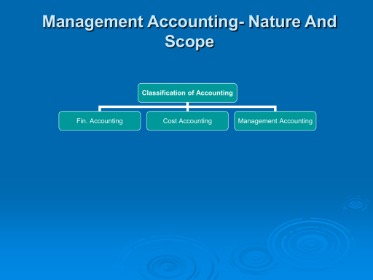
Make sure to reconcile your bank account in QuickBooks to ensure that it matches your actual bank statement. This feature allows businesses to accurately track the flow of funds, ensuring that all incoming payments are accounted for and allocated appropriately. By consolidating funds before they are deposited into the bank, it enhances operational efficiency by streamlining the reconciliations process. This capability strengthens financial insight, enabling businesses to have a clear overview of their cash flow and make well-informed decisions. Both versions of Quickbooks enable users to consolidate multiple payments received into a single bank deposit, streamlining the reconciliation process.

TikTok Shop Payment Methods: Everything You Need to Know
I appreciate you joining the thread with your bank feed inquiry, Sarah. To start, open Quickbooks Desktop and navigate to the ‘Banking’ menu. Choose ‘Make Deposits’ and select the appropriate account from the drop-down menu. To start the process, navigate to the ‘Plus’ icon on the Quickbooks Online dashboard and select ‘Bank Deposit’.
More Accurate Reports
- If your customer is paying an invoice you have entered into QuickBooks Online and sent to them, you will want to record the payment using the Receive Payments option.
- Using this Undeposited funds feature is going to be an important part of your workflow if you use an external processing service or have some wait time depositing your money.
- However, you need to properly credit each customer for their payment.
This separation streamlines the reconciliation process and ensures a clear reflection of the company’s financial position. This systematic approach involves cross-referencing all transactions recorded in the undeposited funds account with the corresponding entries in the bank statement and online banking records. Any inconsistencies should be identified and rectified through adjustments, ensuring that the account accurately reflects the actual financial transactions.
Imagine this account as the blue bank deposit bag businesses use to hold cash/checks/etc before they deposit them at the bank. Undeposited funds help in aligning cash flow management, allowing for better forecasting and strategic decision-making. This integral component plays a crucial role in maintaining transparency, accuracy, and efficiency within the financial management system. The utilization of undeposited funds in Quickbooks simplifies the reconciliation process, ensuring accurate financial reporting and streamlined operations within the financial software. While both Quickbooks Online and Desktop offer functionalities for managing undeposited funds, their operational differences may impact financial tools, insight, and cash flow management for businesses. When dealing with undeposited funds in Quickbooks Online, it is essential to reconcile accounts regularly, categorize transactions accurately, and manage funds effectively to ensure streamlined business finances.
For future reference, you can check out this article to learn more about recording and making bank deposits in QuickBooks Online. Taking prompt action to rectify these discrepancies is essential to maintain financial integrity and ensure a clear and accurate representation of the company’s financial status. As you can see above, my reconcile screen shows one deposit for those three payments and makes it easy for me to match with my bank. This process also applies if you collect checks and cash from your customers and then like to make one deposit into the bank. The importance discontinued operations definition of this step becomes even more apparent in the next screenshot. As we know, reconciling is an integral part of your books and keeping them accurate.
How do I transfer the funds from my undeposited account into my bank?
Then, cross-referencing this information with the actual bank deposits helps to identify any discrepancies in the records. Undeposited funds in QuickBooks Online refer format of trial balance in accounting excel examples to the payments received from customers that have not yet been deposited into a bank account. It is an interim holding account used to manage pending deposits and streamline the reconciling process.
You’ll also notice that when you click on the deposit, it expands and you can choose to edit. This is the convenience of this special account I know you’ll learn to love. If you see a balance in Undeposited Funds on your balance sheet, you need to investigate. This may influence which products we review and write about (and where those products appear on the site), but it in no way affects our recommendations or advice, which are grounded in thousands of hours of research.
QuickBooks moves the money from Undeposited Funds into your bank account, just like your actual bank deposit. All payments in the Undeposited Funds Account will automatically appear in the Bank Deposit window. It allows for better tracking of funds coming in and going out, which is crucial for maintaining a healthy cash flow and making informed financial decisions. Integrating undeposited funds in Quickbooks supports businesses in achieving better financial control and transparency. Managing funds effectively includes creating a clear process for handling undeposited funds, ensuring they are promptly deposited into the correct accounts. This approach fosters financial accuracy and simplifies the overall management of business finances, promoting a healthy financial flow within the organization.
Ensuring timely deposits of undeposited funds in Quickbooks aligns with established financial regulations, enhances adherence to financial procedures, and maintains compliance with financial standards within the system. It also helps in implementing robust financial accelerating deductions with payroll tax accruals controls, ensuring compliance with accounting standards and minimizing the risk of errors or mismanagement of funds. Then, carefully review and select the payments that need to be included in the deposit. Once the items are selected, Quickbooks will automatically populate the ‘Deposit To’ field with the appropriate bank account. After this, the funds are successfully moved from the undeposited account to the designated bank account in Quickbooks Online.